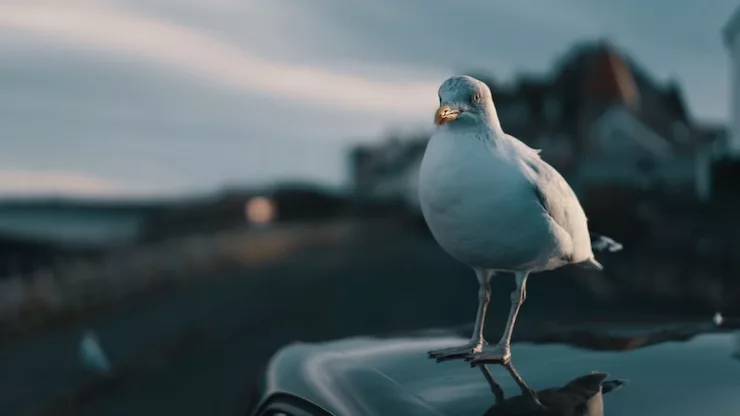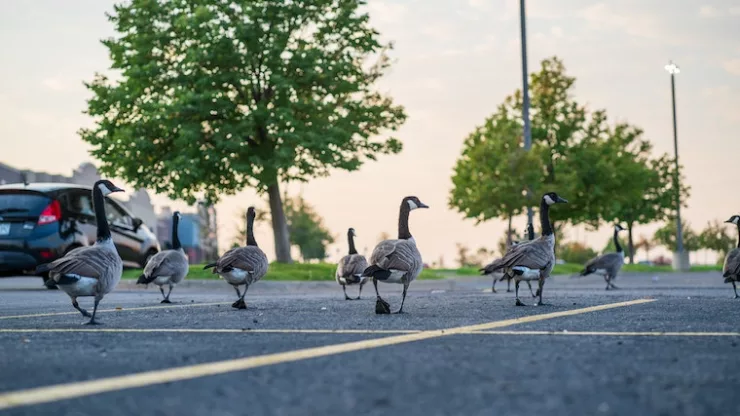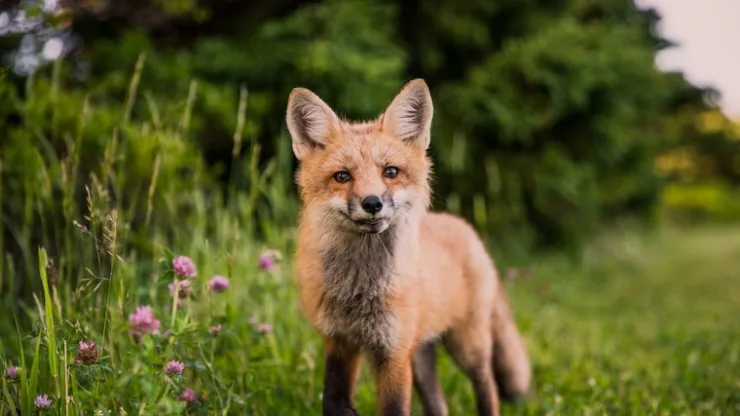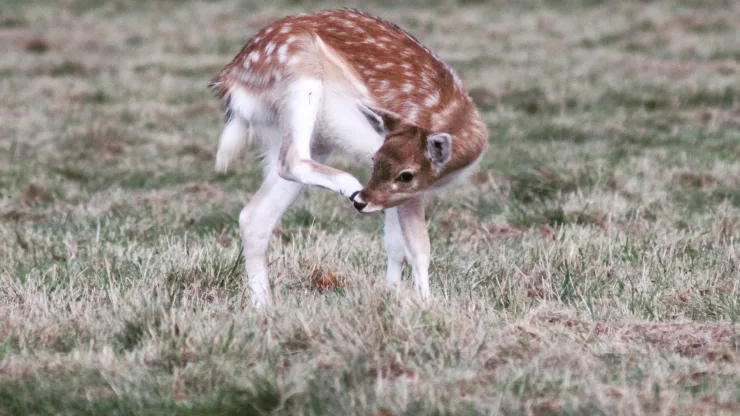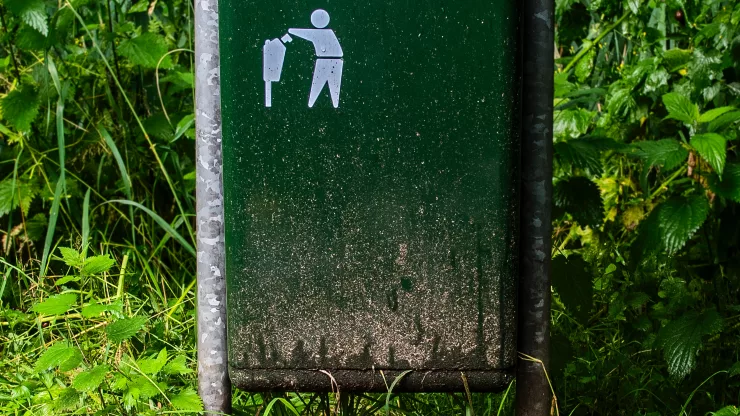Cities are often associated with towering buildings, bustling streets, and human activity. However, beyond the concrete jungle, there is a world of wildlife that thrives in urban environments.
From coyotes to raccoons, squirrels to owls, and even deer and turtles, urban wildlife has adapted to coexist with humans and carve out their own place in the city.
Encounters with urban wildlife can be both thrilling and surprising.
These animals often display incredible adaptability and resilience, surviving in a world that has been drastically altered by human development.
In this article, we will explore some of the most astonishing tales of wild city encounters with urban wildlife.
Jump to Section
Urban Coyotes: The Ultimate Survivors
Coyotes are one of the ultimate survivors of the concrete jungle, found in cities across North America.
These adaptable predators have learned to thrive in urban environments, hunting rodents and small mammals and scavenging for food in dumpsters and trash cans.
Despite their reputation as dangerous animals, coyote attacks on humans are rare. In fact, many encounters with urban coyotes are peaceful and can even be beneficial.
Coyotes help control rodent populations and are a natural part of the urban ecosystem.
However, it’s important for humans to coexist responsibly with coyotes. This includes keeping pets on leashes, securing trash cans, and not feeding coyotes.
By respecting these wild animals, we can continue to enjoy their presence in our cities.
When Raccoons Take Over Your Backyard
Raccoons are another common sight in urban areas, often raiding trash cans and causing mischief in backyards.
These clever animals have adapted to urban environments and can be found in cities across North America.
Despite their cute and cuddly appearance, raccoons can be dangerous if cornered or provoked.
They are also known carriers of diseases such as rabies, making it important to keep a safe distance from them.
If you find raccoons taking over your backyard, there are steps you can take to discourage them.
This includes securing trash cans, not leaving pet food outside, and sealing off any potential entry points into your home.
The Mighty Squirrels: More Than Just Nut Gatherers
Squirrels are one of the most familiar sights in cities across the world.
These nimble rodents are known for their acrobatic antics, often leaping from tree to tree and scurrying along power lines.
While they may be cute and harmless, squirrels play an important role in the urban ecosystem.
They help disperse seeds and nuts, aiding in the growth of new plants and trees.
They also serve as food for predators such as hawks and owls.
Despite their importance, squirrels can sometimes become a nuisance, chewing on wires and causing damage to homes and buildings.
It’s important to take steps to discourage squirrels from making themselves at home in unwanted areas, such as sealing off entry points and using squirrel-proof bird feeders.
The Nighttime Symphony of City Owls
Owls are another common sight in cities, although they are often more elusive than other urban wildlife.
These nocturnal predators hunt at night, using their sharp talons and keen eyesight to catch prey.
Owls are an important part of the urban ecosystem, helping control rodent populations and adding to the biodiversity of our cities.
They can often be heard hooting in the night, adding to the unique soundscape of urban environments.
While encounters with owls in the city are rare, it’s important to respect these wild animals if you do come across them.
This includes not disturbing their nests or attempting to approach them.
The Rise of Urban Beavers: Builders of the Concrete Jungle
Beavers may seem like an unlikely addition to urban wildlife, but in recent years, these industrious rodents have been making a comeback in cities across North America.
Beavers are known for their impressive engineering skills, building dams and lodges that can transform urban waterways.
While beavers can sometimes cause damage to trees and property, they also provide important ecosystem services.
Their dams help regulate water flow and improve water quality, and their lodges provide shelter for a variety of other wildlife.
If you encounter beavers in the city, it’s important to respect their space and avoid disturbing their habitat.
You can also take steps to protect your property from beaver damage, such as wrapping trees with wire mesh or using special beaver deterrents.
The Secret Life of City Foxes
Foxes may be more commonly associated with rural environments, but these adaptable predators have also made their way into cities.
Foxes are known for their stealth and agility, often slipping through gaps in fences and darting across roads.
While they may be elusive, foxes play an important role in urban ecosystems.
They help control rodent populations and can serve as an indicator of the health of urban environments.
If you encounter foxes in the city, it’s important to respect their space and avoid feeding them.
Feeding wild animals can cause them to become dependent on humans and can lead to negative interactions.
The Surprising Presence of Deer in the City
Deer may be more commonly associated with rural environments, but in some cities, these graceful creatures have made themselves at home.
Deer can often be found in urban parks and green spaces, grazing on vegetation and taking advantage of the safety of the city.
While deer may be a welcome sight for many, they can also cause damage to gardens and pose a risk to drivers on the road.
It’s important to respect their space and take steps to prevent negative interactions, such as using deer-resistant plants in your garden and being aware of deer crossing signs on the road.
The Unlikely Sight of City Turtles
Turtles may not be the first animal that comes to mind when thinking of urban wildlife, but these ancient reptiles have adapted surprisingly well to city environments.
Turtles can often be found in urban ponds and waterways, sunning themselves on rocks and logs.
While they may seem harmless, it’s important to respect turtles and their habitat. This includes avoiding disturbing their nesting sites and not removing them from the wild.
The Incredible Adaptability of Urban Wildlife
The astonishing tales of wild city encounters with urban wildlife illustrate the remarkable adaptability of these animals.
From coyotes to raccoons, squirrels to owls, and even beavers, foxes, deer, and turtles, urban wildlife has learned to thrive in a world that has been drastically altered by human development.
As humans continue to build and expand, it’s important to remember that we share this world with a diverse array of wildlife.
By respecting and coexisting responsibly with urban wildlife, we can continue to enjoy the thrill of encountering these wild creatures in our cities.
The Wild Side of Cities
Encounters with urban wildlife can be both thrilling and inspiring. These animals have adapted to coexist with humans and have carved out their own place in the city.
From coyotes to raccoons, squirrels to owls, and even beavers, foxes, deer, and turtles, urban wildlife has demonstrated incredible adaptability and resilience.
As we continue to build and expand our cities, it’s important to remember that we share this world with a diverse array of wildlife.
By respecting and coexisting responsibly with urban wildlife, we can continue to enjoy the thrill of encountering these wild creatures in our cities.
I’m a nature enthusiast and creator of Metro Wilds and have spent years exploring the great outdoors.
With a passion for environmental conservation and sustainability, I have dedicated my career to writing about the beauty and wonders of nature, as well as the threats facing our planet.
Contact me at [email protected] for assistance.

